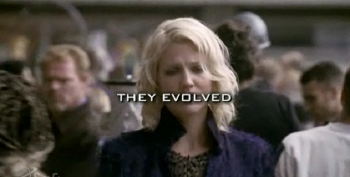 Last week I started an NBA River.
Last week I started an NBA River.
I'm loving it. It's already improved my appreciation for the sport.
To build the river, I visited the newspaper sites of the home cities of all the major teams and found their feeds, and thankfully -- most of the have feeds for their team.
I added national pubs like USA Today and Sports Illustrated. And I asked a friend who works at the NBA for pointers to his favorite blogs. Now I want to open the appeal up more broadly.
If you have a favorite NBA blog or journo, please send me a pointer, either by posting a comment here or by email at dave dot winer at gmail dot com.
I'm looking for great commentary and observations, whether from fans or reporters. Biased is definitely okay.
Thanks!
 This piece on Pando is an example of real journalism that is so rare in tech. A vendor makes an assertion that doesn't sound right to a reporter. So he gets the story on his own. It isn't a story created by a vendor. It isn't a subject that the vendor wants to discuss. It informs the reader how the market is developing, despite what the vendor wants us to think. And it says, in the headline, that the vendor is doing what all vendors do, leading reporters astray. And why shouldn't they? The tech press generally lets them get away with it.
This piece on Pando is an example of real journalism that is so rare in tech. A vendor makes an assertion that doesn't sound right to a reporter. So he gets the story on his own. It isn't a story created by a vendor. It isn't a subject that the vendor wants to discuss. It informs the reader how the market is developing, despite what the vendor wants us to think. And it says, in the headline, that the vendor is doing what all vendors do, leading reporters astray. And why shouldn't they? The tech press generally lets them get away with it.
The Pando piece taught me something, painted a picture I didn't have before. And most important, it makes their case. I'm left wanting to know more, for sure, but all details. I got the kind of overview a good journalistic effort should provide.
Add to this that Pando, alone among tech pubs, has been willing to ask challenging questions about the new Omidyar news company. That's the state of tech journalism in 2013. Now where are the other tech pubs on the Omidyar story?
I said to Paul Carr, a reporter at Pando, that I was surprised, and he asked why. I thought Pando was the worst of the insider tech news sites. I saw them as a PR mouthpiece for the Silicon Valley investor community. That they've been willing to challenge Omidyar, a tech multi-billionaire, and AirBNB, another huge Silicon Valley success, says that they're wanting to do journalism, not just get rich. Which, by the way, is probably why you read so little about Omidyar's company in other tech pubs.
Update: Maybe Pando is hedging a bit.
 Apparently Feedly is changing links to content on blogs and news sources to point at their own pages. I want Scripting News readers to know, if they use Feedly, they will be missing all kinds of good stuff we're doing here.
Apparently Feedly is changing links to content on blogs and news sources to point at their own pages. I want Scripting News readers to know, if they use Feedly, they will be missing all kinds of good stuff we're doing here.
If that's what they (people reading my site through Feedly) want, then it's okay with me. What's not okay is if Feedly somehow represents their pages as mine. If that's what they're doing, or planning on doing, then I ask you to find another way of reading my site.
There's no excuse for representing links to other people's writing as your own. It's one of the ugliest sides of the web. That Feedly, which has up to now been a fairly classy company, would contemplate this, makes me think they must not understand.
 There's a bug in my outliner.
There's a bug in my outliner.
It's an encoding bug. I write something, save it -- everything's cool. But if I reload the app, thus forcing the file to reload, what I get back isn't what I put in. It shows up when I'm writing complex code that does stuff with string constants. It has to reach a certain level of complexity and use single and double quotes, left angle brackets and equal signs. I have been unable to trap it. Probably because my focus is elsewhere. When it comes to encoding issues, the mind always is elsewhere if you know what I mean.
Anyway, I decided I would work around the problem instead of trying to find and fix it. Even this was problematic. Every approach I came up with fell into the same trap. Until I thought of another approach entirely -- if this editor is screwing with the text, I'll use another one that doesn't have the problem. I saved that file in a folder and now load the code in via a script element in the head of the document. Hey it's a better solution anyway, reusable code! At least I tell myself that. But it works. So there's that.
I call it the Indiana Jones Method, after that famous scene in the first Indiana Jones movie, where Indiana comes face to face with a sword-wielding giant in the bazaar. The giant is twice his size. And he's got a huge sword. And he's good with it. There's a crowd. Foreboding music plays. How the hell will Indiana get out of this one!
I don't want to spoil it in case you haven't seen the movie. But it's clever. He does it much the way I solved this programming problem.